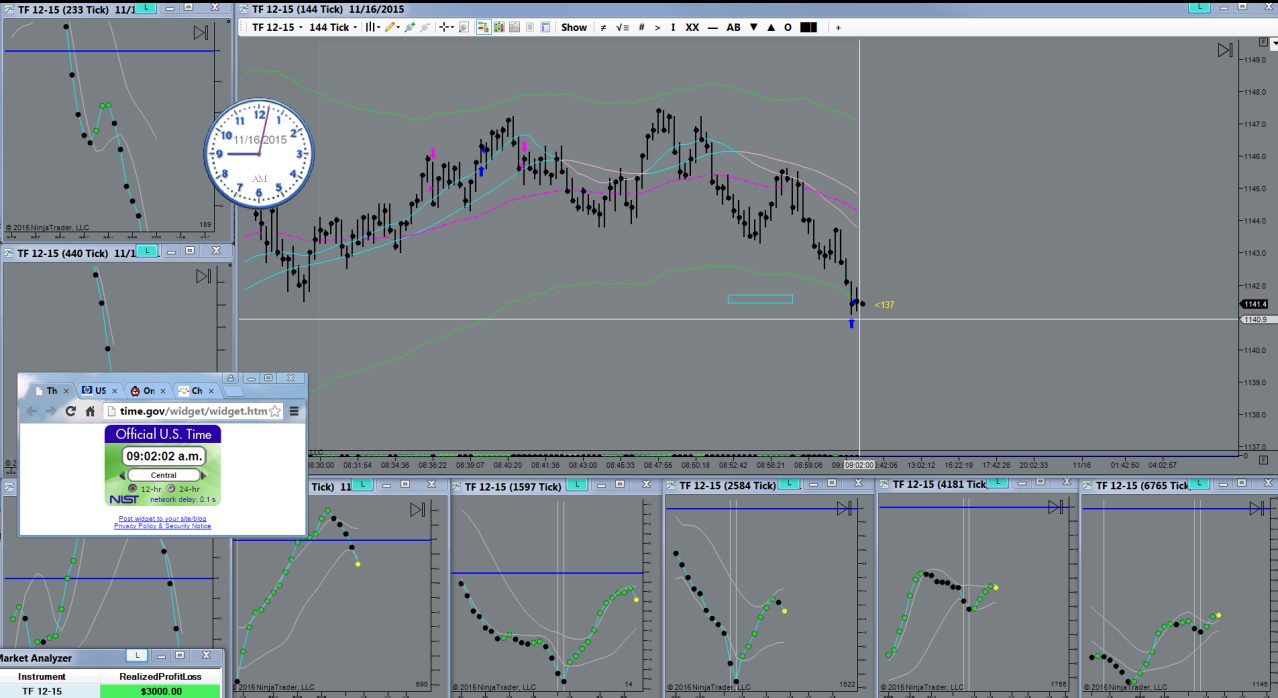Pivot Trading EMini Futures TF Nov. 16th 2015
Pivot Trading EMini Futures TF
Pivot Trading EMini TF Nov. 16th 2015 Pivot Trading EMini TF Nov. 16th 2015 Successful Day Trades from areas of support and resistance down to predetermined target.
In financial markets, a pivot point is a price level that is used by traders as a possible indicator of market movement. A pivot point is calculated in pivot trading as an average of significant prices (high, low, close) from the performance of a market in the prior trading period. If the market in the following period trades above the pivot point it is usually evaluated as a bullish sentiment, whereas trading below the pivot point is seen as bearish.
It is customary to calculate additional levels of support and resistance, below and above the pivot point, respectively, by subtracting or adding price differentials calculated from previous trading ranges of the market.[citation needed]
In pivot trading a pivot point and the associated support and resistance levels are often turning points for the direction of price movement in a market.[citation needed] In an up-trending market, the pivot point and the resistance levels may represent a ceiling level in price above which the uptrend is no longer sustainable and a reversal may occur. In a declining market, a pivot point and the support levels may represent a low price level of stability or a resistance to further decline.[citation needed]
Price support and resistance levels are key trading tools in any market. Their roles may be interchangeable, depending on whether the price level is approached in an up-trending or a down-trending market. These price levels may be derived from many market assumptions and conventions. In pivot point analysis, several levels, usually three, are commonly recognized below and above the pivot point. These are calculated from the range of price movement in the previous trading period, added to the pivot point for resistances and subtracted from it for support levels.[1]
The first and most significant level of support (S1) and resistance (R1) is obtained by recognition of the upper and the lower halves of the prior trading range, defined by the trading above the pivot point (H − P), and below it (P − L). The first resistance on the up-side of the market is given by the lower width of prior trading added to the pivot point price and the first support on the down-side is the width of the upper part of the prior trading range below the pivot point.



